The House of the Sun is an apt name for a place that hosts the world’s most stunning sunrises. At Haleakala National Park in Hawaii, visitors vie for the opportunity to see what Mark Twain once described as “the most sublime spectacle I have ever witnessed.”
It seems the sun begins and ends at Haleakala Volcano, where it is believed that the demigod Maui lassoed it in the sky, slowing its descent to lengthen the days on this beautiful island. Today, you’ll need more than a day to discover the treasures hidden between Haleakala’s rain-forested rocky coasts and the top of its desolate crater.
Why Visit Haleakala National Park?
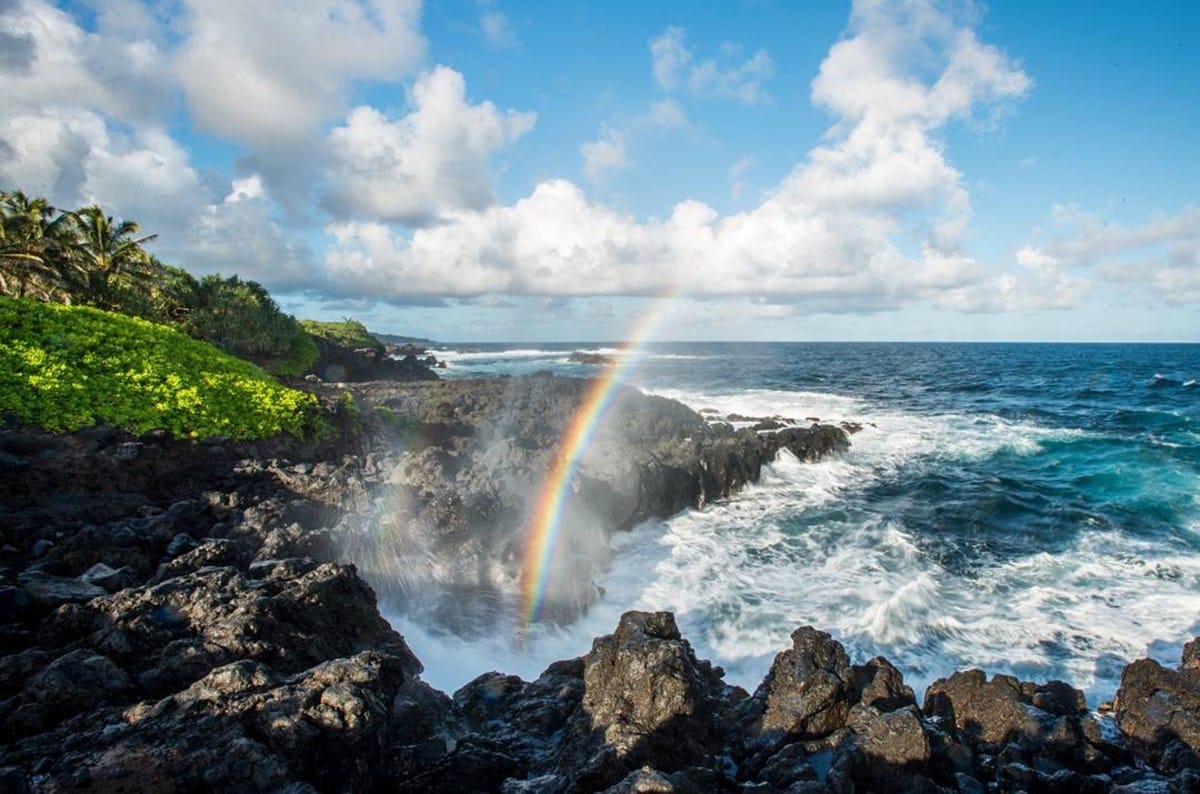
Haleakala National Park is a remote region full of contradictory landscapes and topography. From sea level to over 10,000 feet, the park is home to an amazing array of wildlife and vegetation. Dolphins may greet you along the coastal rainforest and endangered songbirds might sing you to sleep at your campsite.
Awe-inspiring sunrises give credence to the park’s name, and it is easy to see how Polynesians believed Haleakala to be the House of the Sun. It’s one of the most unique places in the US and, honestly, the world. The wildlife is abundant and interesting, the views are spectacular, and the place is magical in all the right ways.
When to Visit Haleakala National Park
Haleakala National Park is open year-round, but temperatures and weather can be deceptive. Maui’s south Pacific location doesn’t receive the same four seasons as most parks in the US, so it makes more sense to break down weather patterns by the park district. But wherever you go, prepare for drastic weather changes.
Weather in the Summit District
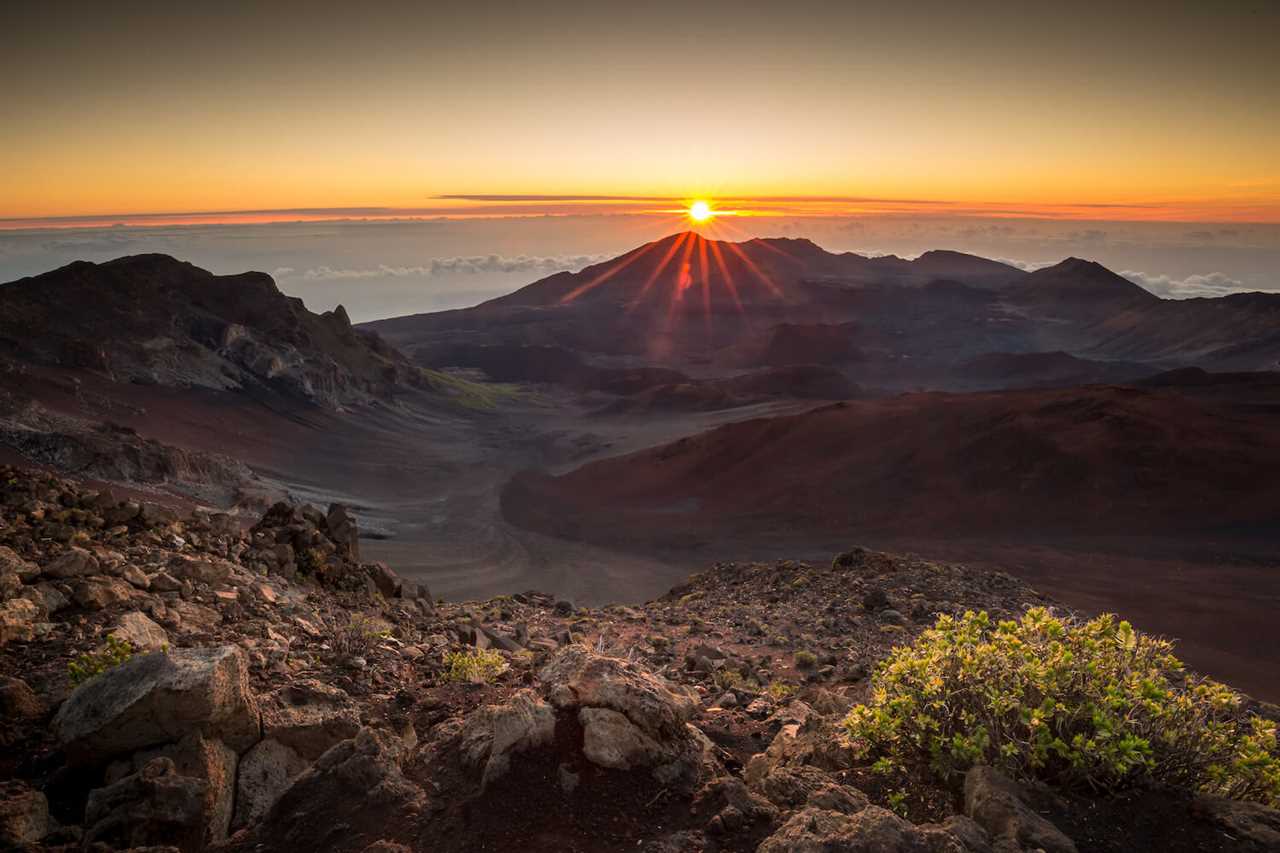
Photo by Evan Austen via Shutterstock
Weather at the park’s higher elevations can be unpredictable. On average, the temperature will drop 3°F for every 1,000 feet of elevation climbed. The crater’s summit can be as much as 30°F cooler than the island’s coastal regions. High winds and rain are also possible at a moment’s notice, but year-round high temperatures range between 50 and 65°F.
Weather in the Kipahulu District
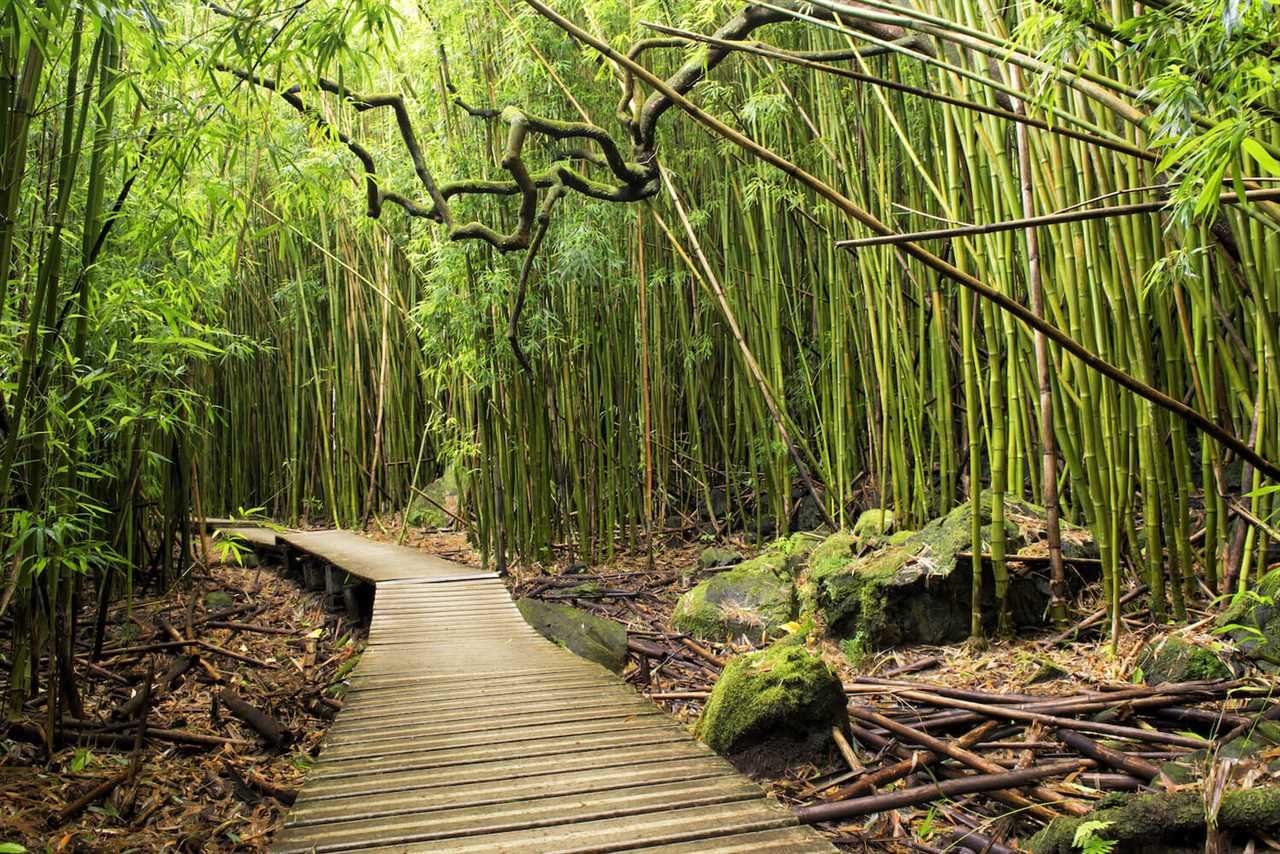
Photo by Alex GK Lee via Shutterstock
The Kīpahulu District is lower in altitude and exhibits typical tropical weather, with hot and humid temperatures and moisture in the forecast most days. Because it’s on the island’s windward coast, this district receives an average of 187 inches of rain annually.
Daily high temperatures range from 70 to 80°F, and nighttime lows rarely drop below 65°F. Be aware that flash floods are hazardous when hiking or recreating in the Kipahulu District. Stop by a visitor center for updates on current conditions.
Where to Stay
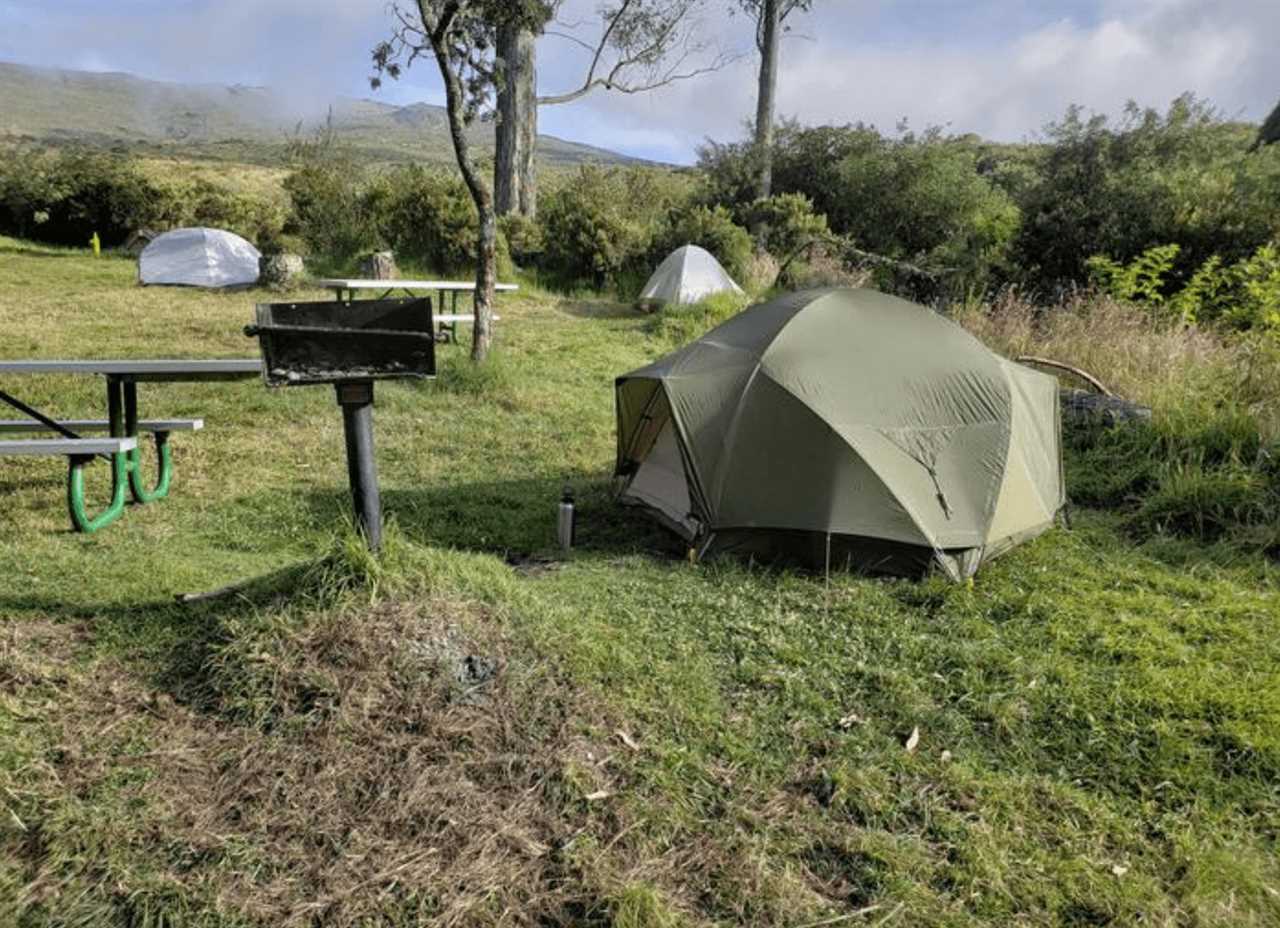
Hosmer Grove Campground Photo by NPS
Within the park, there are two accessible campgrounds for camper vans, car camping, or tent camping. Each has pit toilets, picnic tables, fire pits, and a stay limit of three nights per month. Kīpahulu is best for camper vans, trailers, and pop-up campers, but there are no RV hookups.
- Hosmer Grove Campground lies below the summit at about 7,000 feet and offers six designated walk-in sites spread in an open, grassy area.
- Kīpahulu Campground is close to the Kīpahulu Visitor Center and offers 20 total sites (15 drive-ins and 5 walk-ins).
There are also three historic wilderness cabins in the crater that can be reserved for up to two consecutive nights. Otherwise, travelers are encouraged to book lodging in any of the surrounding towns.
Tips for your Camping Stay
- Camping reservations are required and can be made up to six months in advance. Check availability at Hosmer Grove and Kīpahulu campgrounds.
- Reservations at Hosmer Grove include a reservation to view the sunrise from the volcano’s summit for the morning after their stay.
- Campsites can accommodate up to five people and a single tent.
- Vehicles must park on paved surfaces, and a printed reservation confirmation may be required.
- Wet conditions are always possible when camping in the park. Explore how to choose the right camping tent to find one that will keep you dry.
How to Get Around Haleakala National Park

Photo by iofoto via Shutterstock
A trip to Maui requires a flight. But once you arrive, you can rent an RV or rent a car to get to Haleakala National Park. From the airport in Kahului, you can take Route 37 to Route 377 and Route 378 to access the park’s entrance to the Summit and Wilderness Districts.
If you’re visiting the Kīpahulu District, take Route 36 to Route 360 to the park entrance. Allow several hours to enter either area, as the roads are very windy and steep. Remember that there are no gas stations or groceries available within the park boundaries, so stock up before you enter.
Places to Go
Here’s a look at some of the must-go places in the park. If you’re going to make the trek out there, you might as well hit these particular spots.
The Visitor Centers

Photo by Happy Hour Photography via Shutterstock
There are three visitor centers in the park: Headquarters, Haleakala, and Kipahulu. We highly recommend starting your visit to the park with a stop by the most convenient visitor center for the district you’re planning to visit. Park rangers are your best resource for up-to-date trail conditions, wildlife behavior, and park maps.
Summit District

Photo by NPS
Overlooking the Haleakala Crater, this park region has cinders underfoot and outstanding views from above the clouds. It offers amazing sunrise and sunset observation points and several hiking trails through shrubland. The park headquarters visitor center is located here.
Kīpahulu District
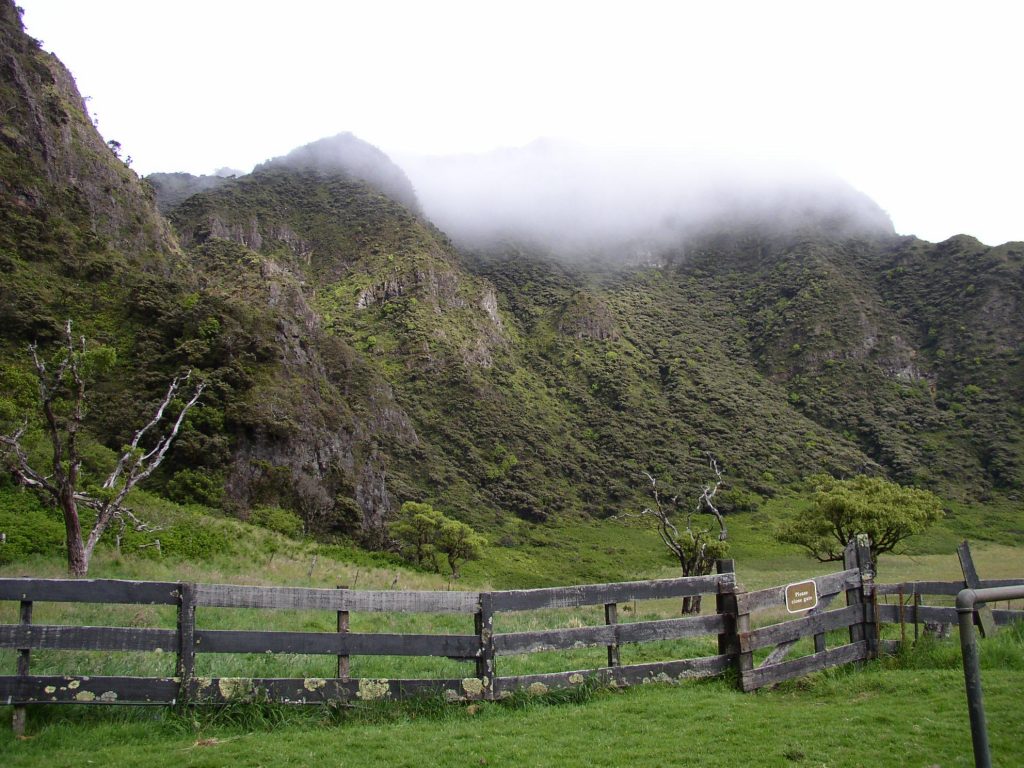
Photo by NPS
Accessed by road to Hana, the Kīpahulu region lies along the coast, with rain forests, waterfalls, and Hawaiian cultural sites. Hike through lush vegetation to rocky shores, where sea turtles, dolphins, and humpback whales frolic in the surf. This district has its own visitor center.
Wilderness Area

Photo by NPS
Designated as a biological reserve, the roadless sections of Haleakala National Park encompass more than 24,000 acres of land. These areas are important preserves for native and endangered plant and animal species.
Visitors will find barren red desert land in the crater leading to coastal rain forests in the wilderness valley at the base of the mountain. The region can be accessed by two hiking trails: Halemauʻu Trail and Keoneheʻeheʻe Trail (Sliding Sands). The Haleakala visitor center is located within the Wilderness District.
Things to Do in Haleakala National Park
Here’s a look at some amazing things you can do and see while in the park. You definitely won’t be bored here.
Sunrise and Sunset Views
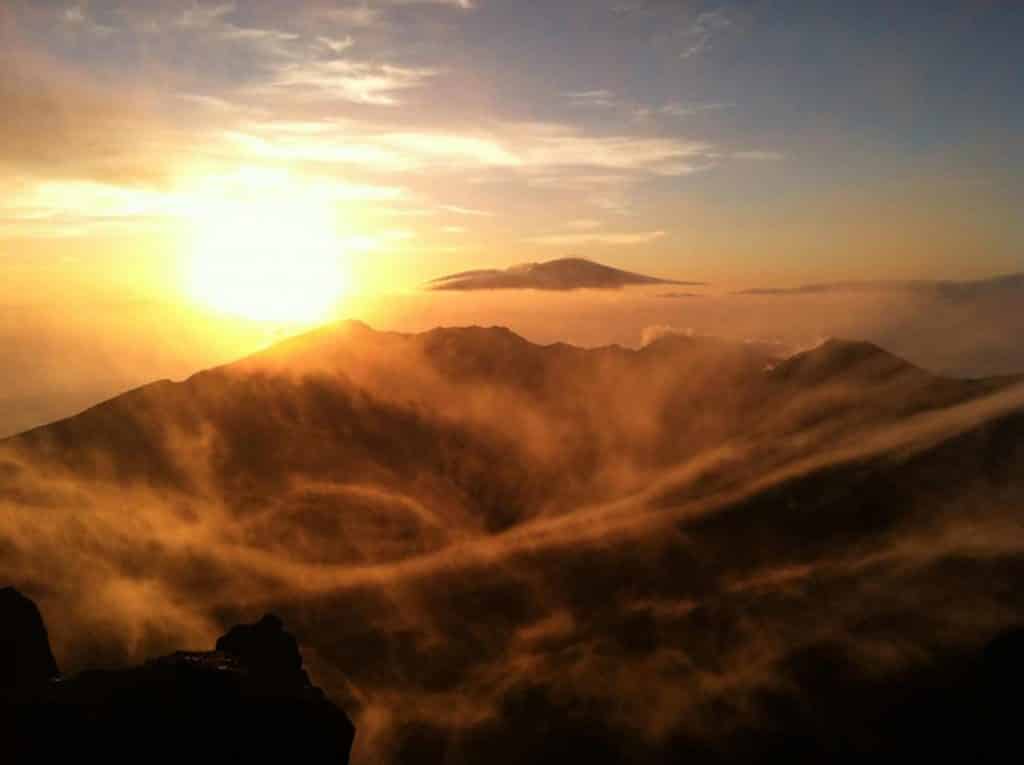
Photo Credit: NPS by Wendy Swee
One of the most popular activities at Haleakala is driving up to 10,023 feet above sea level to watch the sunrise or sunset from the top of a dormant volcano. In fact, it has become so prevalent that reservations to view sunrise are now the only way to capture the morning’s entrance. Sunset viewing is a little less in demand, so no reservations are necessary for that.
Hiking
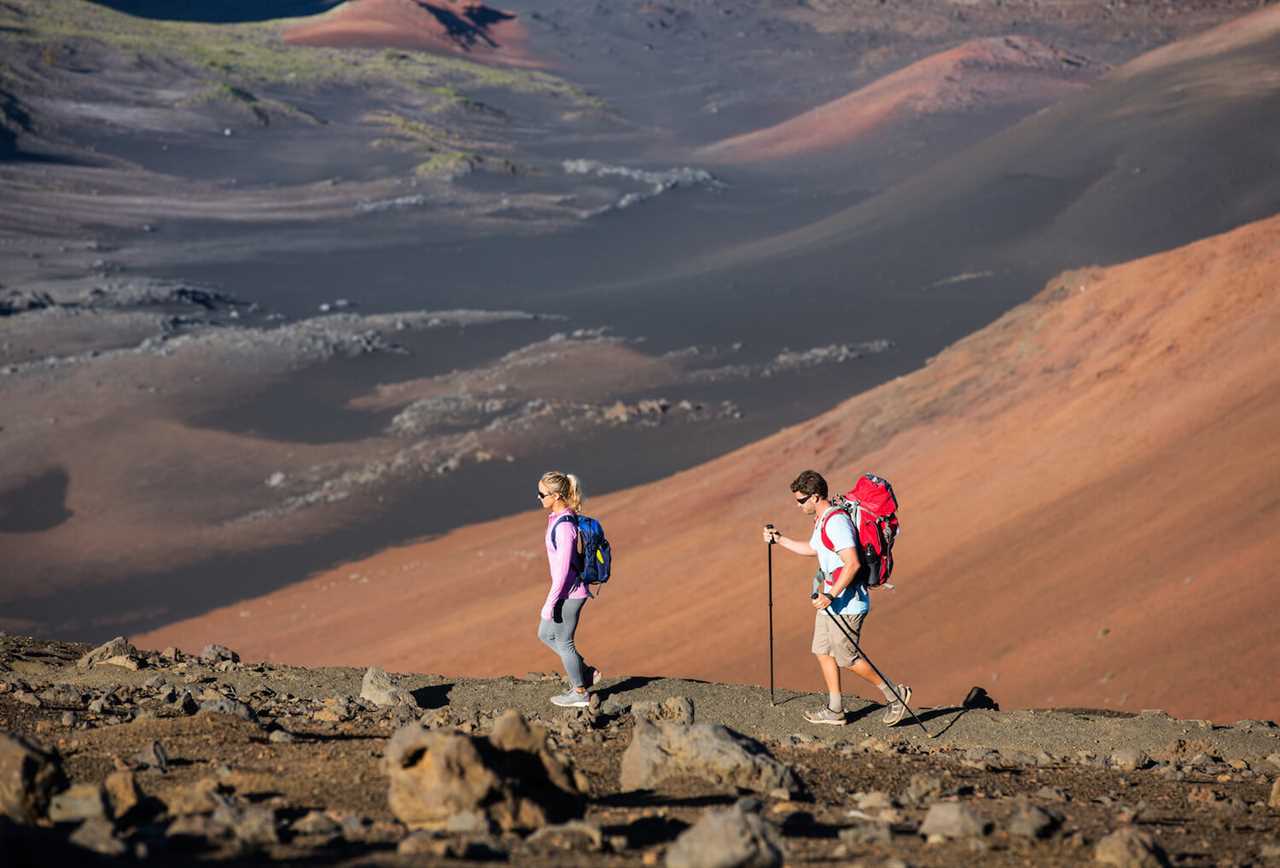
Photo by EpicStockMedia via Shutterstock
The best way to see Haleakala National Park is on foot. There are numerous hiking trails organized by the district. Hikers are reminded to stay on designated trails, as required by law and enforced by the National Park Service.
Summit District Trails
Over 30 miles of trails lie within the Summit District, where temperatures are much cooler and the air thinner at high altitudes.
- Pā Ka‘oao Trail is close to the park headquarters, with a view of ancient rock walls and the crater of Haleakala Volcano.
- Sliding Sands Trail takes hikers down into the crater and ends in the Kīpahulu District.
- Leleiwi Overlook is a short walk to the crater viewpoint.
- Halemau‘u Trail leads to a Rainbow Bridge and the crater floor.
- Supply Trail intersects with Halemau’u Trail.
- Hosmer Grove takes hikers through a biological reserve, where over 50 endangered species of plants endemic to the Hawaiian Islands flourish.
Kīpahulu District Trails
Two trails lead explorers through coastal rain forests and past waterfalls.
- Pīpīwai Trail is a moderately strenuous hike to Waimoku Waterfall and through a bamboo forest.
- Kūloa Point Trail takes hikers to ocean viewpoints and several archaeological sites.
Backpacking
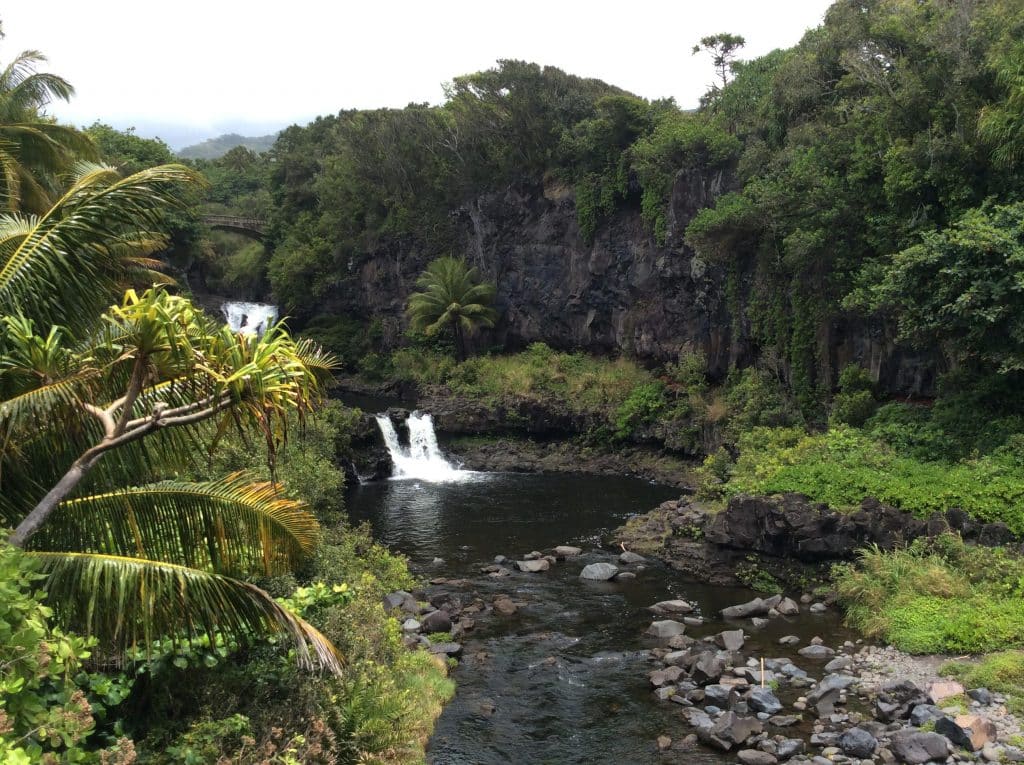
Photo Credit: NPS
There are two backcountry camping areas available to backpackers. Each camping area lies on a trail and has a two-night maximum stay. They are great base camps from which to explore more of the park, and permits and advanced reservations are required for backcountry camping.
- Hōlua Campsite is almost four miles from Halemau`u trailhead and accesses the Wilderness District.
- Palikū Campsite is more than nine miles down the Sliding Sands Trail and is located at the base of rainforest cliffs for a lush, cool campsite.
Campers are reminded that daytime temperatures run from 40 to 70 degrees, with nighttime temps at 30 to 50 degrees, so plan accordingly.
What to Bring and How to Prepare

Photo by Maridav via Shutterstock
- The Summit Area offers better cell reception than the Kipahulu District, depending on your provider. There is no public Wi-Fi access in the park.
- From anywhere in the park, stores and services will be a minimum of 30 minutes away. Pack a camping cooler with enough food and water for your entire stay.
- Nights can get chilly in the Summit District. Make sure you have a quality sleeping bag rated for those cooler overnight temperatures.
- The park is known for its varied elevations and unpredictable weather. Pack clothing layers to prepare for hot, dry, wet, and cold weather.
- Bring plenty of sunscreen for hot days in parts of Haleakala National Park with minimal shade.
- If you’re planning on backpacking in the park, ensure you have a quality hiking backpack with a rain cover to keep your gear dry.
- The park’s hiking trails can be steep and slippery, depending on the conditions. A nice pair of walking sticks may be a nice addition for some hikers.
Brief History of Haleakala National Park
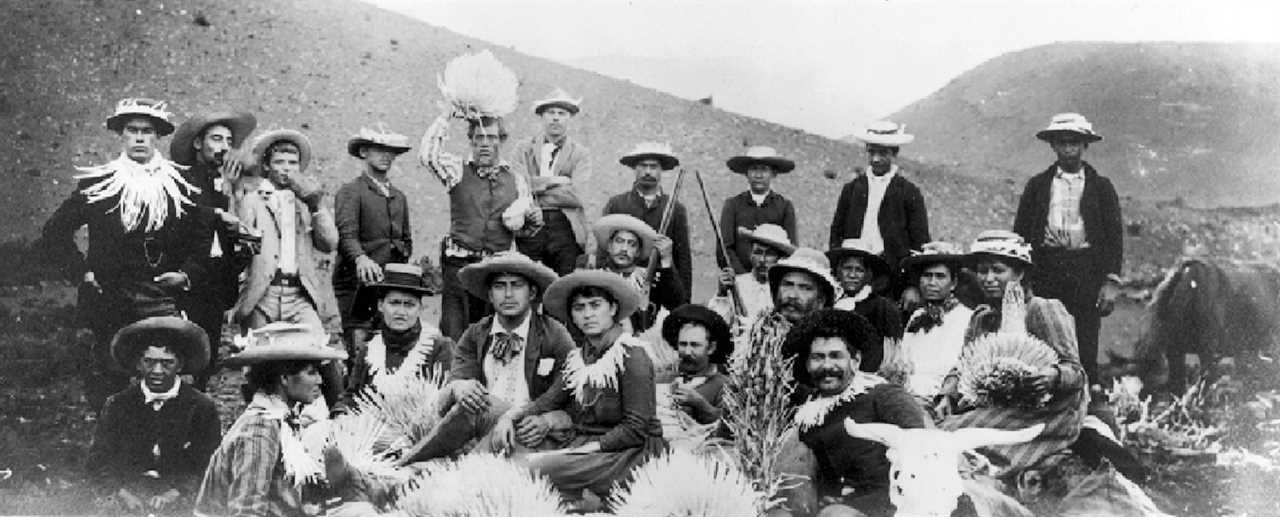
Photo by NPS
The Hawaiian Islands were colonized by the Polynesians between 0 to 800 AD, and during that time, Haleakala Crater was visited frequently. By 1778, explorer Captain James Cook was the first European to have contact with the Hawaiians, then died in an uprising on the big island the next year. Forty years later, American missionaries came to the island of Maui.
Sugar cane plantations came and went on Haleakala, with cattle ranches taking their place, both destroying the habitat of the Hawaiian goose, called nē nē. But eventually, Hawaii was annexed as a territory of the United States. By 1916, Haleakala became part of Hawaii National Park, along with the Hawaii Volcanoes region.
This provided some protection for native plant and animal species in the park, and by the time Hawaii became the 50th state, Haleakala was separated from Hawaiian National Park, becoming a national park in its own right in 1961, which is when the reintroduction of nē nē began.
Plan your next trip to the national parks in an RV. Rent an RV, trade-In your RV, or buy a new or used RV and start traveling for less than $5 a day.
Have you ever been to the Haleakala National Park? What were your experiences there?
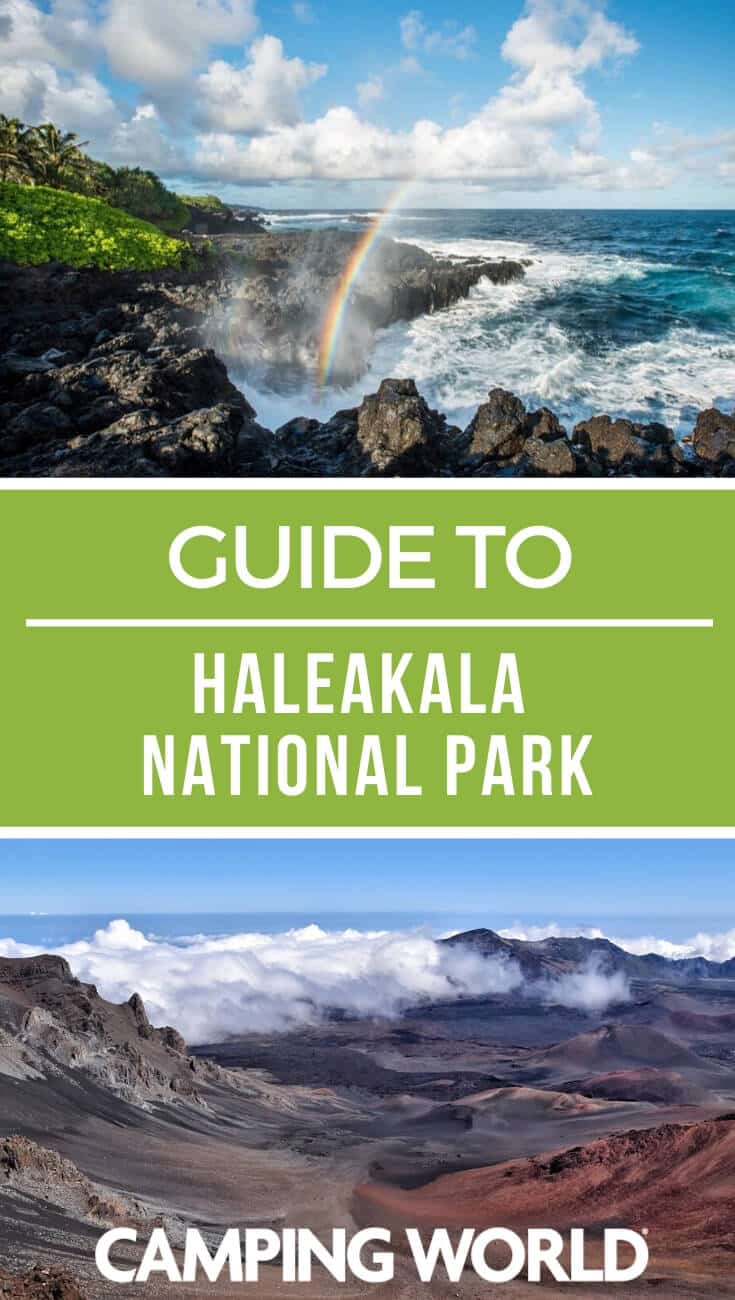
By: Shelley Dennis
Title: Camping World’s Guide to Haleakala National Park
Sourced From: blog.campingworld.com/the-rv-life/where-to-go/camping-worlds-guide-to-haleakala-national-park/
Published Date: Thu, 15 Sep 2022 22:30:44 +0000
---------------------------------------------
 CampingSurvivalistHuntingFishingExploringHikingPrivacy PolicyTerms And Conditions
CampingSurvivalistHuntingFishingExploringHikingPrivacy PolicyTerms And Conditions
